2022 Eminent Haste MT Comp Bike
(discontinued)
| Where To Buy | |||
|---|---|---|---|
Free shipping on orders over $50 (continental U.S. only).
International shipping available. Some exclusions apply. |
|||
Free shipping on orders over $50 (continental U.S. only).
International shipping available. Some exclusions apply. |
|||

In December of 2021, Eminent Cycles launched its Drive eMTB while simultaneously debuting the high-pivot iteration of their Active Float System (AFS) suspension design. The new layout marked a significant departure from Eminent's inaugural AFS layout and, subjectively speaking, was a huge improvement aesthetically. We tested the Drive last Spring, and it checked all the boxes for a hard-charging, 160mm eMTB: bottom-less suspension feel with excellent support, stability at speed, and a plow-anything mentality to weather the gnarliest trails.
The Drive gave Eminent some much-needed momentum as a brand, and they wasted little time piggybacking off that success to deliver the Haste 2.0 in March last year. Utilizing the high-pivot AFS suspension design, the new rendition of Eminent's enduro bike shares many similarities with the Drive. In fact, the Haste 2.0 is almost identical to the Drive and uses the same rear triangle (like exactly the same, complete with e-bike speed sensor routing), the same suspension kinematics, and nearly identical geometry. After enjoying our time on the Drive, the stage was set to see how Eminent's motor-less model performs.
Haste MT 2.0 Highlights
- 29-inch wheels
- 160mm (6.3-inches) rear wheel travel // 170mm (6.7-inches) fork travel
- Unidirectional carbon frame
- AFS (Active Float System) High Pivot Suspension Design
- Two-position geometry adjustment
- 64/63.5-degree head angle
- 76.2/77-degree effective seat angle
- 440mm chainstay length
- Uninterrupted seat tube
- Water bottle and tool mount
- Integrated e*thirteen top guide
- Super Boost 157mm rear hub spacing
- Sizes: medium, large, X-large
- Three build kit options
- Measured weight (size large, no pedals): 35.7 lbs (16.1 kg)
- MSRP: $6,199 - $10,099 USD
Strengths |
Weaknesses |
|
|
Overview
Like the Drive, the defining attribute of the Haste 2.0 is Eminent's new AFS suspension configuration. The first-generation Haste flaunted the original AFS layout that mounted the shock through a tunnel in the seat tube, and the rear brake was attached to an independent floating brake mount. Now, the rear shock is in front of the seat tube, and the rear brake mounts directly to the floating dropout. The rear shock still floats within the high pivot design, but instead of being suspended between the seat and chainstay, the shock now floats between the chain stay and lower linkage.

With the shock now positioned in front of the seat tube, the Haste 2.0 has an unobstructed seat tube that offers a healthy 308mm (size large) insertion depth. And most importantly, it now accommodates internally routed dropper posts, unlike the previous frame design that only accepted externally routed droppers. The long seat tube also allowed Eminent to cut about an inch off the standover height compared to the first Haste.


Comparing both Haste frames, the Haste 2.0 looks much more refined, leaving little aesthetic or technical features to be desired (besides maybe internal storage) while maintaining attributes that make it obviously an Eminent, like the long, sloping lines spliced by diagonal cross bracing.
The defining trait of the AFS high pivot design is its rearward axle path. Identical to the Drive, the axle path of the Haste 2.0 moves backward 15mm as the suspension goes through its travel, allowing the rear wheel to move up and out of the way of compressions. The benefit of this motion is the suspension can provide better stability and traction through repetitive compressions, which creates a smooth and calm ride. An idler pulley mounted to the main pivot helps compensate for chain growth and features an e*thirteen chain guide for extra chain security.


The AFS high pivot design has a 30% progressive leverage rate with a linear rate of change. This makes the Haste 2.0 remain consistent and predictable as it moves through its travel while also providing more mid-stroke support and increased bottom-out resistance. It also means that a shock with a lighter compression tune can be used, as well as coil shocks.
The floating brake mount on the first Haste was a serious point of contention for many riders due to its complexity compared to a standard post mount. Like the Drive, the Haste 2.0 has done away with that design. The new mounting location of the rear brake within the high-pivot AFS design achieves the same goal as the brake bracket, decoupling suspension and brake forces so that anti-rise remains low with minimal brake-induced suspension movement. Anti-rise sits at 30% around sag, and with the brake bracket gone, the Haste 2.0 can fit a 203mm rear rotor.



Final frame details include dual-row angular bearings at the seat and chainstay pivots, water bottle and tool mounts inside the front triangle, rubber chainstay and downtube protectors, and a SuperBoost 157 rear hub spacing with a drop design that uses a keyed rear axle. The hub spacing and keyed dropouts are both meant to increase lateral and torsional stiffness.
Build Kits
Eminent offers the Haste 2.0 in two travel options: the Haste LT with 150mm of travel and the Haste MT with 160mm of travel. We tested the least expensive MT Comp model that retails for $6,199 and is highlighted by a 170mm Marzocchi Z1 fork, FOX Performance Float X shock, TRP Slate T4 brakes with 203mm rotors, Sun Ringle Duroc Expert aluminum wheels, and a Shimano drivetrain made up of Deore and SLX components. Our test bike differed slightly from the stock build and featured a Marzocchi Bomber Air shock. Two more expensive MT models exist, the most notable difference being an upgrade to FOX Performance Elite or Factory suspension, TRP EVO brakes, and Shimano XT or XTR drivetrains.




As we type this up, all build kits are on sale on Eminent's site, dropping the price range to $4,600 - $8,100 USD.



Geometry
The Haste MT features a geometry package on par with other modern-day enduro bikes. Now rolling on 29-inch wheels, the geometry is considerably longer, slacker, taller, and lower than the Haste 1.0. And unsurprisingly, it closely mirrors the geometry of the Drive, with the most noticeable difference being a steeper seat tube angle and a slightly longer reach. A flip chip in the upper shock mount changes the head tube angle, seat tube angle, and bottom bracket height. We only tested the Haste 2.0 in the steep position, which gave our large test bike a 64-degree heat tube angle, 77-degree seat tube angle, and 347mm bottom bracket height. This was paired with a 643mm stack height and 440mm chain stay length. We never swapped the Haste into slack mode because we rarely rode terrain that warranted making the bike lower and slacker. The steep position offered plenty of comfort and confidence for the occasional high-speed straight away or steep chute, and the tad-steeper seat angle was appreciated when lugging our 36-pound test bike up steep climbs. Swapping the flip chip is a quick trailside adjustment for those who feel the need for speed and some slacker angles.

On The Trail
With my background racing downhill, I love testing longer travel bikes as I get to revisit my old shuttle spots. Steep and direct climbs followed by rough, fast, and highly engaging singletrack were my preferred cup of tea while testing the Haste MT. Having already reviewed the Drive, I knew the AFS high pivot design craved aggressive riding and offered excellent stability, traction, and responsiveness. Thus, I focused on giving the Haste a thorough dose of relentless ripping to see how the motorless version performed.

Eminent recommends setting rear sag between 25-30%, and after a few rides, I settled on 32%. When I tested the Drive, I settled on 35%. Why so much sag? The mid-to-ending-stroke support of the AFS high pivot design was phenomenal. Since I didn't have to worry about blowing through the travel or relying on shock pressure to provide support, running a little less pressure and a tad more sag softened the initial part of the stroke, placing me deeper into the travel. This created a planted and smooth ride through really rough and chattery sections without diminishing pedaling efficiency or making the Haste feel sluggish down flow or jump trails.
Beyond dialing in sag, setting up the front end height of the Haste took a few rides. First, the stock 25mm rise Pro Taper handlebar was flatter than I prefer, and the steerer tube was too short to compensate with headset spacers. Second, the Marzocchi Bomber Z1 fork lacked enough damping, causing the front end to dive once I started hitting compressions at speed. Combined, both factors placed me too forward over the Haste.


The Z1 uses FOX's simpler GRIP damper with only a low-speed compression sweep adjustment and low-speed rebound. After fiddling with the vague compression knob way too much, I found that positioning the lever at around 4 o'clock was the sweet spot for receiving some mid-stroke support without making the fork feel too stiff off the top. I also added two volume reducers (totaling four) and ran slightly higher pressure, eventually settling on 90psi (vs. 76-80psi recommended). The result was a fork setup that offered adequate mid-stroke support with good initial stroke sensitivity. However, when really pushing the Haste through rough, repetitive compressions, the fork struggled to keep up and provide optimal support. To maintain a rearward and upright body position in these situations, I installed 38mm rise handlebars, which increased my confidence when diving into big hits.
Descending Performance
In the best way possible, the Haste was undoubtedly a hard-charging enduro bike from the moment I pointed downhill. It wasn't trying to be multiple bikes in one or perform satisfactorily in various situations. The Haste thrived on steep, rough, teeth-gritting trails where stability and composure were essential to arrive at the bottom in one piece. It took a few runs to dial in my setup, but once I was jiving with the bike and felt comfortable letting off the brakes, I struggled to reach the bike's max speed limit.

One of my favorite characteristics of the bike was how stiff the frame was in high-energy situations, such as compressing into deep g-outs or slapping hardpack corners. This rigidity made the Haste super responsive to rider input and allowed me to generate speed out of trail features and carry momentum down flowy jump lines. When trails flattened out, I was constantly impressed by the pace I could hold for being on a 36-pound enduro bike (with pedals).
The only time I struggled to ride the Haste how I wanted was in tight or awkward sections. Even though the large I tested flaunts fairly standard enduro geometry, the Haste felt big. And not big like it didn't fit me, but big in the sense that it was a lot of bike to maneuver when trails tightened up or required quick direction changes. However, that's the trade-off when you ride a bike designed for high-speed, challenging trails, and it wasn't a total deal breaker having to muscle the Haste into submission from time to time.

If I were to add the Haste to my quiver of bikes, it would be reserved only for riding downhill tracks, bike parks, or any trails where I want to avoid being under-biked. The Haste might require proper terrain to maximize its potential, but for those who oblige, you'll have difficulty finding trails or features that overwhelm the bike.
Climbing
If I'm being honest, I expected to settle into a relatively slow pace when I set off on my first climb aboard the Haste. After all, it's a 160mm, slack enduro bike built to get rowdy, so it didn't strike me as a bike that cared much about climbing performance. Well, paint me red and call me a firetruck! The Haste was a solid climber that made grinding up hills quite enjoyable. Even with 32% sag in the rear, the suspension remained firm under pedaling with just enough movement to take the edge off bumpy terrain. Eminent's decision to steepen the seat angle was definitely the right move, as any slacker and the Haste would have likely performed as I anticipated.

When seated, the Haste placed me comfortably forward over my pedals, which was awesome when granny-gearing up really steep grades. On mellow or long ascents, I could relax into a more upright position and pedal at an easier pace. I've ridden other enduro bikes that require a high minimum output to maintain momentum, so I appreciated the ability to knock out long climbs on the Haste without draining all my energy. Overall, the Haste was a competitive climber compared to other 160mm travel bikes. Considering the build kit we tested was not the lightest, you could easily swap out a few parts to drop the overall weight, which would likely yield some additional uphill performance.
Rear Suspension Performance
Eminent's AFS suspension design can be summed in one word: bottomless. With a 30% progressive leverage rate, finding a compression that would unsettle the Haste was near-impossible. The harder I pushed into holes or pulled further off jumps, the more the suspension matched my efforts, offering some of the best bottom-out control of any bike I've tested.

While the ending stroke support added peace of mind in really harsh situations, I spent most of my time around mid-travel. Since the Haste is progressive with a linear rate of change, the feel and support of the suspension remained consistent as I compressed deeper into the travel. Combining this sensation with the 15mm of rearward axle path, the Haste provided an incredibly smooth and controlled ride over rough terrain. The ability of the rear wheel to move back, up, and out of the way of compressions allowed the bike to glide over repetitive impacts while maintaining forward momentum.
When I tested the Drive, one of my favorite characteristics of the AFS design was the lack of pedal kickback. The same rang true on the Haste, as I could smash into compressions without thinking about keeping my feet glued to my pedals. Feedback was also mitigated by the Haste's low anti-rise and floating brake design, which truly allowed the suspension to move freely through compressions under braking forces.
Build Kit

Marzocchi Z1 Bomber Fork
The performance of Marzocchi's Z1 Bomber fork was underwhelming. I like the idea of a fork with limited adjustments that promotes a 'set it and forget it' mentality. I spent way more time trying to get the Z1 to stand up through high-speed compressions while remaining supple off the top than I ever do with higher-end dampers. Eventually, I achieved a good-enough setup that allowed me to push the Haste and have fun riding. Still, when I really let off the brakes and started smashing compressions, the Z1 struggled to provide the support I've come to expect from FOX's Grip2 damper. Not all riders will find the fork as limiting, but on a bike like the Haste that can handle some aggressive riding, having more adjustments to achieve a perfect setup would have complimented the bike's abilities. The other factor is that the Haste Comp MT build tested retails for $6,199 USD, which is a lot of money to hash out for a mid-tier fork.

TRP Slate T4 Brakes
When I tested the Drive, it also came equipped with TRP's entry-level Slate T4, 4-piston brakes. The performance of the brakes was more noteworthy on the Drive simply because they functioned so well for a cheaper brake specced on a 50-pound eMTB. While they didn't have to work as hard to slow down the Haste, the T4s provided the same strong, consistent braking power. The power delivery was quick and direct with minimal modulation that promoted an on or off-braking style, similar to how Shimano brakes feel. After plenty of fast and steep descents, I never experienced any brake fade, the lever pull has remained consistent, and the pads still have plenty of life left to live.

Shimano Deore and SLX Drivetrain
We are in a day and age when Deore and SLX level drivetrain components function as well as XT, which is epic. They might weigh a little more and look less fancy, but the shifting is accurate, crisp, and consistent. I'm sure my friends got tired of me going off on how well the drivetrain shifted on the Haste, but it's the first time in my cycling career that an entry-level derailleur, cassette, and shifter can withstand the abuse of proper riding. The only part of the drivetrain I might swap out down the road would be the SLX shifter. Compared to the snappy, instant feel of XT or XTR, the SLX shifter felt vague and flimsy. It functioned just fine, but I've become greedy with the speed of my shifts after riding predominantly electronic shifting for the past few years.

Noise
For the most part, Haste was rattle free down even the most heinous trails. It was only during harsh compressions when significant energy was being pushed through the bike, like purposely overjumping a double or smashing into holes, that the Haste produced a loud clank noise. I struggled to replicate the sound just bouncing around on flat ground or in other trail situations. I did a thorough bolts check and searched for any signs of wear due to wheel flex, but I found nothing. My best guess is that the SLX derailleur clutch was struggling to maintain chain tension and was overpowering the abilities of the modest rubber chainstay protector to deaden chain slaps.

What I did hear way more often than the mysterious knocking noise was the constant purr of the Haste's idler pulley. And not only could I hear the idler, but I could feel it. As each chain link engaged with the pulley wheel, a slight vibration would radiate through the frame. It reminded me of a roller coaster's rhythmic clicking as it ascents into the sky. While some might deem this a deal breaker, I didn't mind the sound and didn't feel like the idler affected the pedaling efficiency of the Haste. If anything, the weight of our test bike affected how fast I could go uphill more than the potential drag from the pulley. For those who want the smoothest, most efficient pedaling experience, any high-pivot bike will struggle to satisfy your needs. Eminent does have room to improve its idler's performance, but as it stands now, it functions as intended.
Long Term Durability
Most bikes arrive at my front door brand new in a box, making it tough to snuff out potential durability concerns during a two-month testing period. I doubt Eminent will mind me disclosing this, but the Haste I tested was not brand new and had journeyed to a few other publications before landing in my possession. They went through the bike and freshened up any components that needed some love, but the bike was clearly used. And I love that fact. Of course, I don't know how many hours were on the frame and components, but it was more than I would accumulate during a typical test. After adding my abuse to the bike, I don't have any areas of concern to write home about. The Haste never developed any creaks even after weekly washes, I didn't have a single bolt rattle lose, and the suspension linkage is still moving smoothly. When I tested the Drive, there was some wear where the shifter exited the front triangle by the seat tube caused by the cable sliding against the frame as the suspension compresses. Even though the Haste used the same routing, this spot mysteriously had no wear. Still, if I were to keep the Haste as my own, I'd toss on some protective tape to limit the possibility of the issue.

What's The Bottom Line?
Coming off the success of their Drive eMTB, Eminent's decision to apply its latest AFS high pivot suspension design to their Haste model produced a limitless enduro bike built to withstand rowdy and aggressive terrain. Highlighted by its ability to remain stable and composed down steep, fast, and rough trails, the new design offers exceptional support while minimizing trail feedback and maximizing traction. A surprisingly efficient and enjoyable bike to pedal, the Haste is ideal for those wanting to access gnarly trails under their own power.
For more information about the Haste, please visit eminentcycles.com
About The Tester
Jason Schroeder - Age: 28 // Years Riding MTB: 16 // Height: 6' (1.8m) // Weight: 180-pounds (79.3kg)
A once-upon-a-time World Cup downhill racer turned desk jockey, Jason has spent years within the bicycle industry from both sides of the tape. A fan of all-day adventures in the saddle or flowing around a bowl at the skatepark, he doesn't discriminate from any form of two-wheeled riding. A SoCal native who doesn't spend too much time in any single place, you can find Jason camped out in his van most weekends somewhere on the West Coast.
Specifications
Rear: Maxxis Minion DHR II, 29" x 2.4"
• AFS High Pivot rear suspension design
• Geometry adjustable via flip chip in upper shock mount
• Internal cable routing
• Includes Valiant shock pump, Topeak Hexus II multi-tool, and Topeak 5Nm TorqBox tool
Eminent Cycles Introduces the Haste 2.0 (press release)
eminentcycles.com
| Where To Buy | |||
|---|---|---|---|
Free shipping on orders over $50 (continental U.S. only).
International shipping available. Some exclusions apply. |
|||
Free shipping on orders over $50 (continental U.S. only).
International shipping available. Some exclusions apply. |
|||













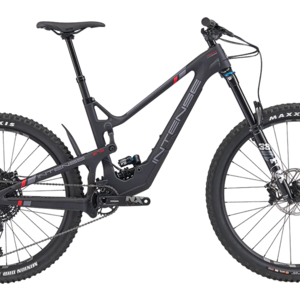
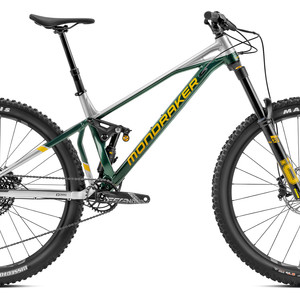
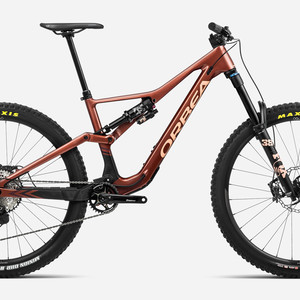

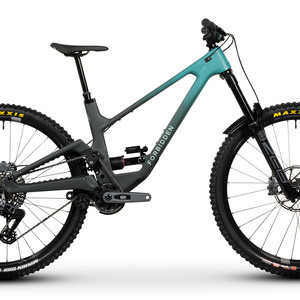
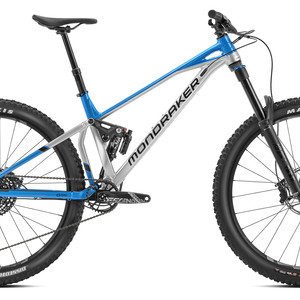







0 comments
Post a reply to: REVIEW: Eminent Haste MT 2.0